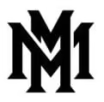Mastering Muscle-Building Techniques
Understanding and incorporating diverse training techniques is essential for anyone serious about muscle growth and strength improvement. While foundational exercises are key, advanced methods can accelerate progress, break plateaus, and keep workouts exciting. From Time Under Tension (TUT) to advanced methods like drop sets and giant sets, each technique plays a unique role in muscle activation and adaptation. Explore these effective approaches below to maximize your gains and achieve your muscle-building goals.
Advanced workout techniques are essential for those looking to elevate their fitness journey beyond basic training. These methods help maximize muscle growth, improve strength, and enhance overall performance. By incorporating advanced strategies like high-intensity interval training (HIIT), supersets, and progressive overload, you can challenge your body in new ways and break through plateaus.
There's so many techniques, Where should you start?
Benefits of Learning Advanced Workout Techniques
Learning advanced techniques like supersets and drop sets activates a wider range of muscle fibers, particularly the fast-twitch fibers responsible for strength and hypertrophy. By challenging your muscles in different ways, you stimulate growth more effectively.
Advanced techniques often mimic real-life movements and improve overall strength. Techniques like Olympic lifts or kettlebell training develop functional strength that translates to daily activities and sports performance.
Repetitive workouts can lead to boredom and decreased motivation. Incorporating advanced techniques keeps your workouts fresh and exciting, making it easier to stick to your fitness regimen.
Advanced techniques often emphasize recovery methods, helping you avoid overtraining and injuries. This holistic approach allows your body to adapt and grow stronger.
As you learn and master advanced techniques, you build confidence in your abilities, making you feel more capable and empowered.
Set Your Goal
Define Specific Objectives
Identify what you want to achieve. This could include gaining muscle mass, improving endurance, or mastering a particular technique. Setting SMART (Specific, Measurable, Achievable, Relevant, Time-bound) goals can provide clarity and direction.
Break Down Goals
Instead of aiming for a broad goal, break it down into smaller, manageable milestones. For example, if your goal is to master a complex lifting technique, focus on mastering individual components first, such as grip, stance, and movement patterns.

Gradually Incorporating New Techniques
Start Slow
When learning a new technique, begin with lighter weights or lower intensity to focus on form. Prioritize learning the correct movement pattern before adding resistance. Begin by learning a few techniques at a time slowly incorporating them into your program.
Practice Regularly
Consistency is key. Incorporate the new technique into your routine at least a couple of times a week to reinforce learning. The more you practice, the more natural the technique will become.
Emphasizing Mind-Body Connection
Focus on Form Over Weight
Concentrate on mastering the movement rather than lifting heavier weights. This mindset fosters better technique and reduces the risk of injury.
Visualization Techniques
Visualize yourself performing the technique successfully before attempting it. This mental rehearsal can enhance your confidence and execution.
Patience and Mindfulness
Be Patient
Mastering a new technique takes time. Be patient with yourself, and don’t rush the learning process. Recognize that progress may be gradual, and celebrate small victories along the way.
Practice Mindfulness
Stay present during your workouts. Focus on each movement and how your body feels. This awareness can enhance your learning experience and help you make necessary adjustments in real-time.
By setting clear goals, utilizing structured programs, gradually incorporating new techniques, and embracing variety, you can streamline the process of learning new fitness techniques. Remember that patience and consistent practice are key to mastering these skills and achieving your fitness goals. Let these strategies guide you as you embark on your journey to enhance your fitness techniques and overall performance.
Top Training Techniques for Strength and Muscle Growth
Progressive Overload
Progressive overload is the foundation of strength and muscle growth. This technique involves gradually increasing the demands placed on your muscles over time, forcing them to adapt and grow stronger. Progressive overload can be achieved by:
- Increasing the weight lifted
- Performing more reps or sets
- Reducing rest time between sets
This technique is essential for consistent progress. As you lift heavier or perform more reps, your muscles are challenged to grow and become stronger. Incorporate progressive overload in every workout to make continuous gains.
